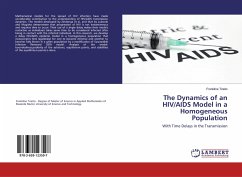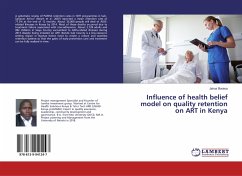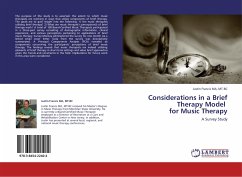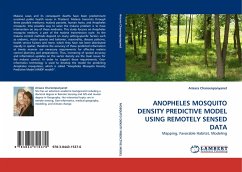
The Dynamics of an HIV/AIDS Model in a Homogeneous Population
With Time Delays in the Transmission
Versandkostenfrei!
Versandfertig in 6-10 Tagen
27,99 €
inkl. MwSt.

PAYBACK Punkte
14 °P sammeln!
Mathematical models for the spread of HIV infection have made considerable contribution to the understanding of HIV/AIDS transmission dynamics. The models developed by Zindonga et al. and that by Luboobi and Mugisha demonstrate that progression of HIV is not instantaneous and requires time to occur. Their use of a single delay makes their models restrictive as individuals takes some time to be considered infected after being in contact with the infected individual. In this research, we develop a delay HIV/AIDS epidemic model in a homogeneous population that incorporates time lags(delay) for on...
Mathematical models for the spread of HIV infection have made considerable contribution to the understanding of HIV/AIDS transmission dynamics. The models developed by Zindonga et al. and that by Luboobi and Mugisha demonstrate that progression of HIV is not instantaneous and requires time to occur. Their use of a single delay makes their models restrictive as individuals takes some time to be considered infected after being in contact with the infected individual. In this research, we develop a delay HIV/AIDS epidemic model in a homogeneous population that incorporates time lags(delay) for one to become infective and another to become fully blown in a given population by a modification of Susceptible Infective Removed (SIR) model. Analysis of the model: boundedness,positivity of the solutions, equilibrium points, and stabilities of the equilibrium points is done.












